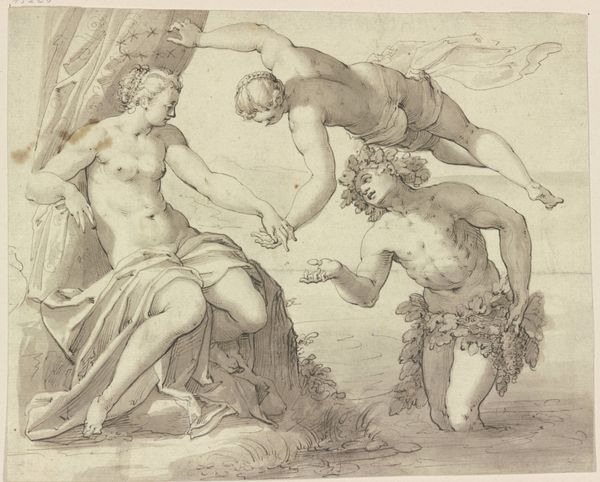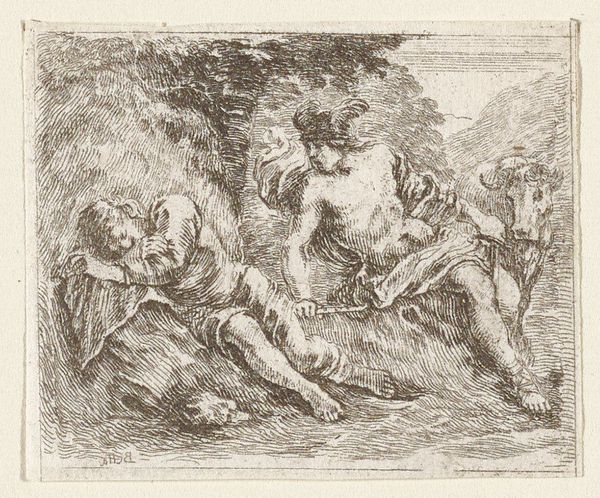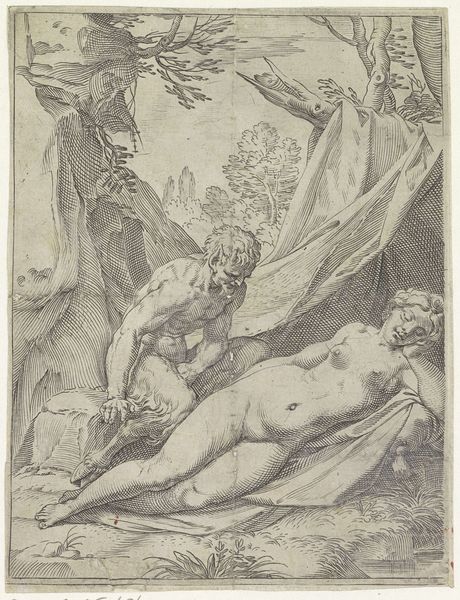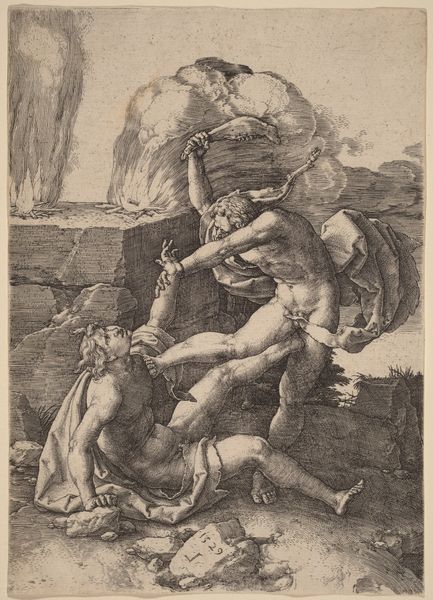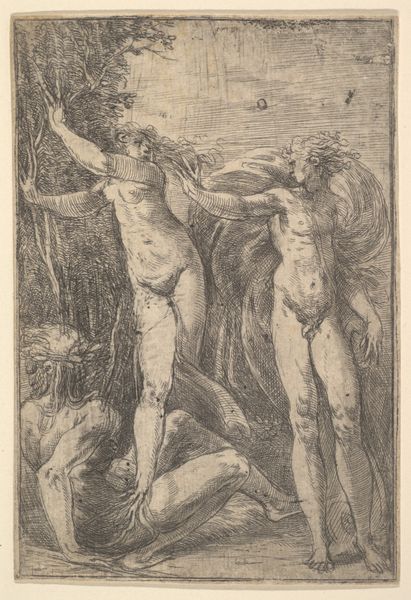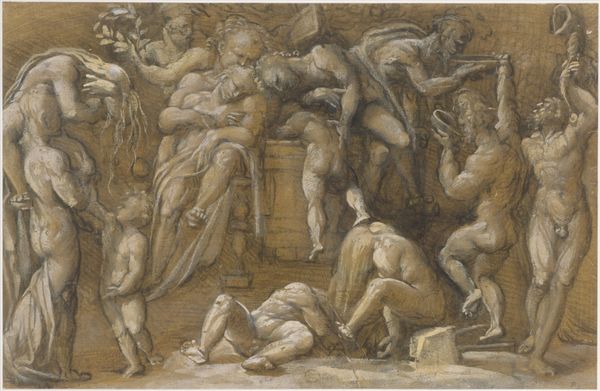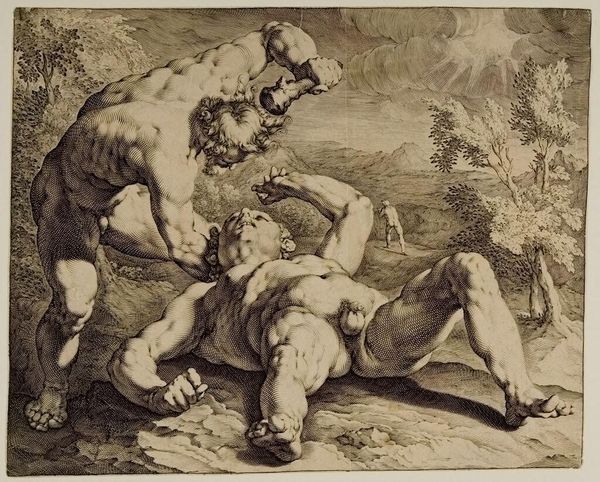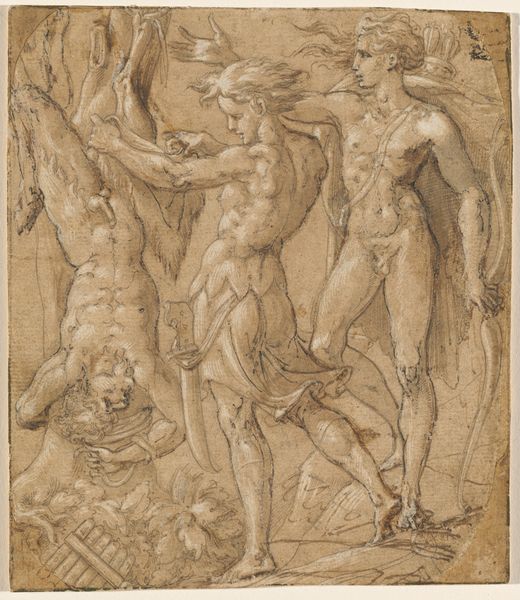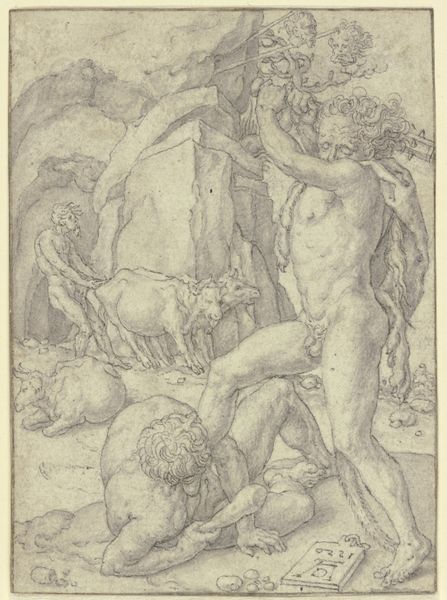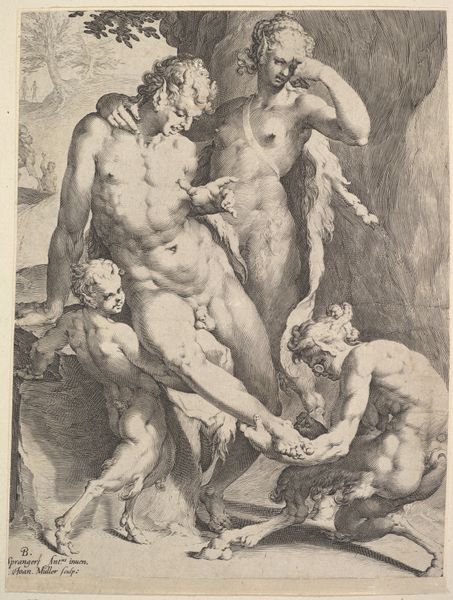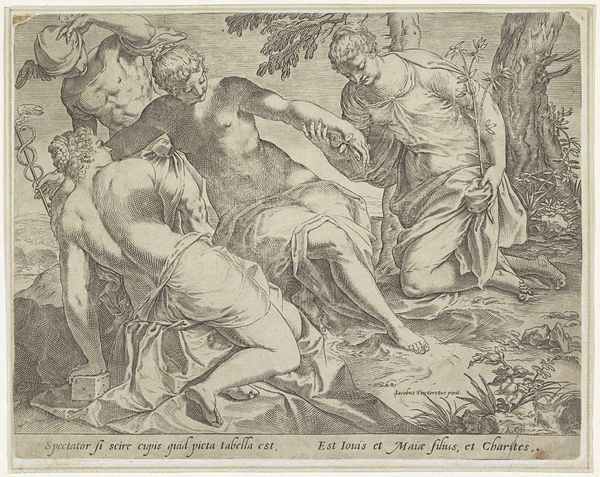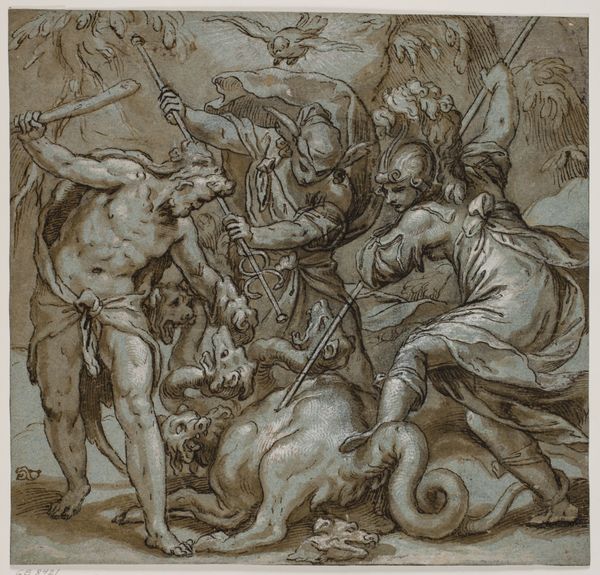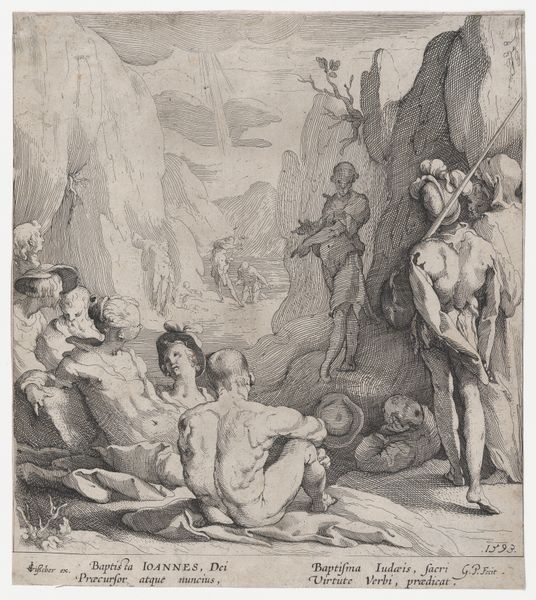
drawing, charcoal
#
drawing
#
narrative-art
#
charcoal drawing
#
figuration
#
charcoal
#
history-painting
#
northern-renaissance
Dimensions: height 370 mm, width 545 mm
Copyright: Rijks Museum: Open Domain
Curator: Look at this intriguing drawing, "Hercules and Cacus," rendered in charcoal by Jan Gossart. The work was produced sometime between 1518 and 1528 and it's now held at the Rijksmuseum. Editor: My initial reaction is one of drama, a raw brutality even in the medium of charcoal. The contrast of light and shadow emphasizes the tension, the looming figure above about to strike, a foot planted firmly on the victim below. Curator: Indeed, Gossart really harnesses the capacity of charcoal here, particularly focusing on the textures and layering which evoke not just a visual narrative, but also hints at the social forces at play. Note how the composition subtly positions Hercules in a more privileged location to perform a public act. Editor: Speaking of that contrast again, it is used to monumental effect! The interplay between the smooth musculature of the figures and the jagged, almost violently rendered rocks is fantastic. The use of cross-hatching also makes the whole piece appear more dynamic. Curator: Considering the history, Cacus was a monstrous fire-breathing giant and the son of Vulcan. This piece could represent an exploration of social anxieties and how societal order should prevail by brute strength if required. Editor: And even considering all of that historical narrative, I keep coming back to its formal achievements: the bold lines and chiaroscuro effects that elevate the composition beyond simple illustration, or merely documenting of historic class wars, as it almost leaps off the page. Curator: True. The application of the Northern Renaissance style with its commitment to representing classical subjects would appeal to aristocratic collectors wanting validation, of possessing classical learning through artworks in their household. Editor: I think you've made me see the charcoal as more than just the medium to display the struggle of these protagonists but as an expression of the human drive itself to achieve greatness or meet their brutal end! Curator: Perhaps we can also admire Gossart’s subtle way of blending human figures into a grand socio-political debate— it’s a perfect illustration of culture and its context.
Comments
No comments
Be the first to comment and join the conversation on the ultimate creative platform.
